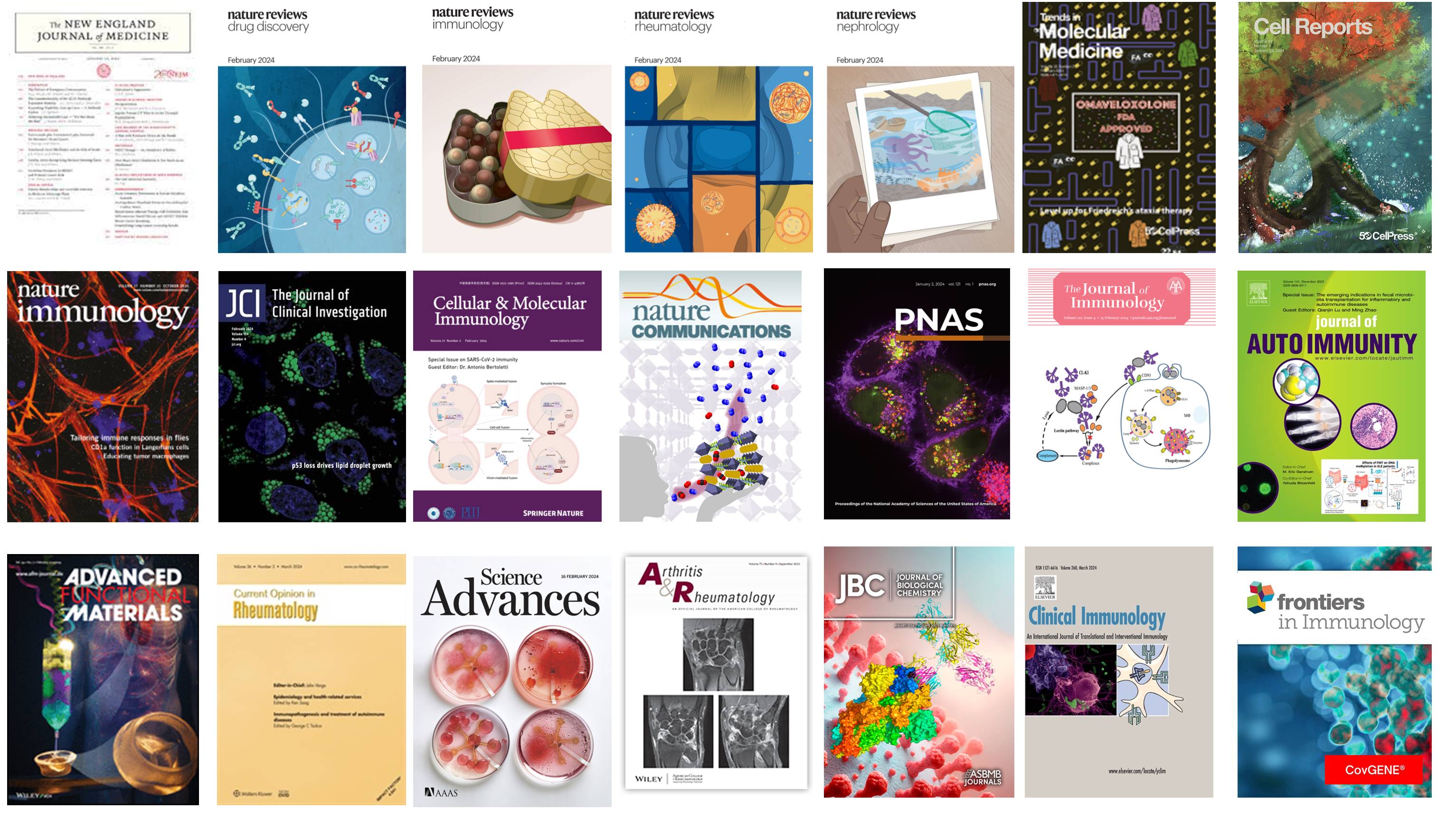Halasi, M., Nyska, A., Rubin, L., Tal, Y., Tsokos, G. C., & Adini, I. (2022). Melanocyte-secreted fibromodulin constrains skin inflammation in mice injected with lupus serum. Clin Immunol, 241, 109055. https://doi.org/S1521-6616(22)00136-X [pii]10.1016/j.clim.2022.109055
Skin pigmentation has been linked to the development, prevalence, and severity of several immune-mediated diseases such as SLE. Here, we asked whether fibromodulin (FMOD), which is highly expressed in skin with light complexion, can explain the known differences in the magnitude of inflammation. C57 mice with different levels of pigmentation and FMOD were injected with human lupus serum to induce skin inflammation. Histopathologic studies revealed that black C57 FMOD+/+ that produce low levels of FMOD and white C57 FMOD -/- mice develop more severe inflammation compared with white FMOD +/+ mice. This study also revealed that dark pigmentation and FMOD deletion correlates with the increased numbers of Langerhans cells. Altogether, we identify low pigmentation and FMOD are linked to low severity of inflammation and approaches to promote FMOD expression should offer clinical benefit.

